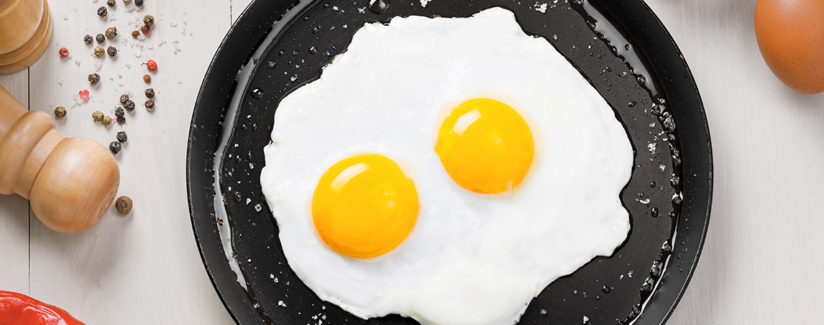
Why Do Eggs Have Double Yolks or Other Variations?
Have you ever cracked an egg open and found two yolks? Or blood spots inside? We asked consumers what their top questions were about a favourite breakfast food – eggs. Dr. Grégoy Bédécarrats is a professor at the University of Guelph in Canada and is a leading expert in the poultry industry. We asked Dr. Bédécarrats for his insight into these wacky egg discoveries.
My eggs don’t just have a blood spot but are all bloody inside, why? Do processors not use electronic candlers?
Dr. Bédécarrats: “Blood spots are the result of small blood vessels rupturing during the formation of the yolk and or blood leakage during ovulation that becomes part of the egg. The eggs on your table are normally not fertile, so blood spots do not correspond to early embryo development. Yes, eggs are checked with a variety of new equipment at the grading station, but this is mostly to check for cracks and defects. Note that the procedure of “candling” is when eggs are held above a light in a dark room. The light penetrates the egg and makes it possible to observe the inside of the egg. Candling is actually used to check embryo development in fertilized eggs, which is not necessary for eggs designed for consumption.”
Why do I crack open my eggs and find so many double yolks? Are farmers feeding their hens hormones?
Dr. Bédécarrats: “It is important to understand that no hormones are used in poultry production as genetic selection and improved nutrition are sufficient to increase production to meet consumer demand.
“Chickens, like most birds, have only one functional ovary and the growing yolks are organized in a hierarchal manner in the chicken, with the biggest one first. High producing birds lay an egg every day in a timely manner, and sometimes instead of having one single growing yolk, there may be two in the ovulation process. When this double ovulation occurs, both yolks end up in the egg. All the eggs on your table go through a grading station that checks for integrity, weight, size and shape. They are then organized in small, large and extra-large categories (double yolks will likely be in the extra-large group). Often the double yolks are sent to the “breakers market” for commercial use in bakeries or producing products such as mayonnaise.”
How is yolk colour determined? Are organic eggs darker or lighter in colour? Are free-range eggs darker or lighter?
Dr. Bédécarrats: “The colour of the yolk has nothing to do with them being produced organically, conventionally, or the chickens’ genetics – it is only dependant on the nutrition of the laying hen. The colouration is the result of pigments naturally found in feed that are accumulated in yolks and can be adjusted to accommodate for the consumer preferences of a specific market. For example, in North America a paler yolk is preferred compared to some Asian countries who prefer an orange coloured yolk. A diet based on wheat will give a lighter coloration while corn-based diets gives a slightly darker colour. If plant pigments such as carotenoids (which give carrots their orange colour) are part of the diet the egg yolk will become darker. When outdoor free-range chickens supplement their diets with foraged plants and insects, it could change the amount and type of pigment ingested.”
Here is a guide to differences between conventional, organic, free-range and cage-free eggs.
Why are my eggs runny when I crack them?
Dr. Bédécarrats: “Although most laying hens have an unchanging egg white consistency, sickness and the age of the bird can impact the integrity of the egg. Commonly, the main factors of a watery egg white are the age and storage of the egg itself. An older egg, insufficient humidity or a high storage temperature can result in more watery eggs.”
Eggs are a natural food and variations occur because of differences in hens, their age or diet. May is National Egg Month, so it’s a good time to crack one open. Vote in the poll for your favourite way to enjoy eggs!


























